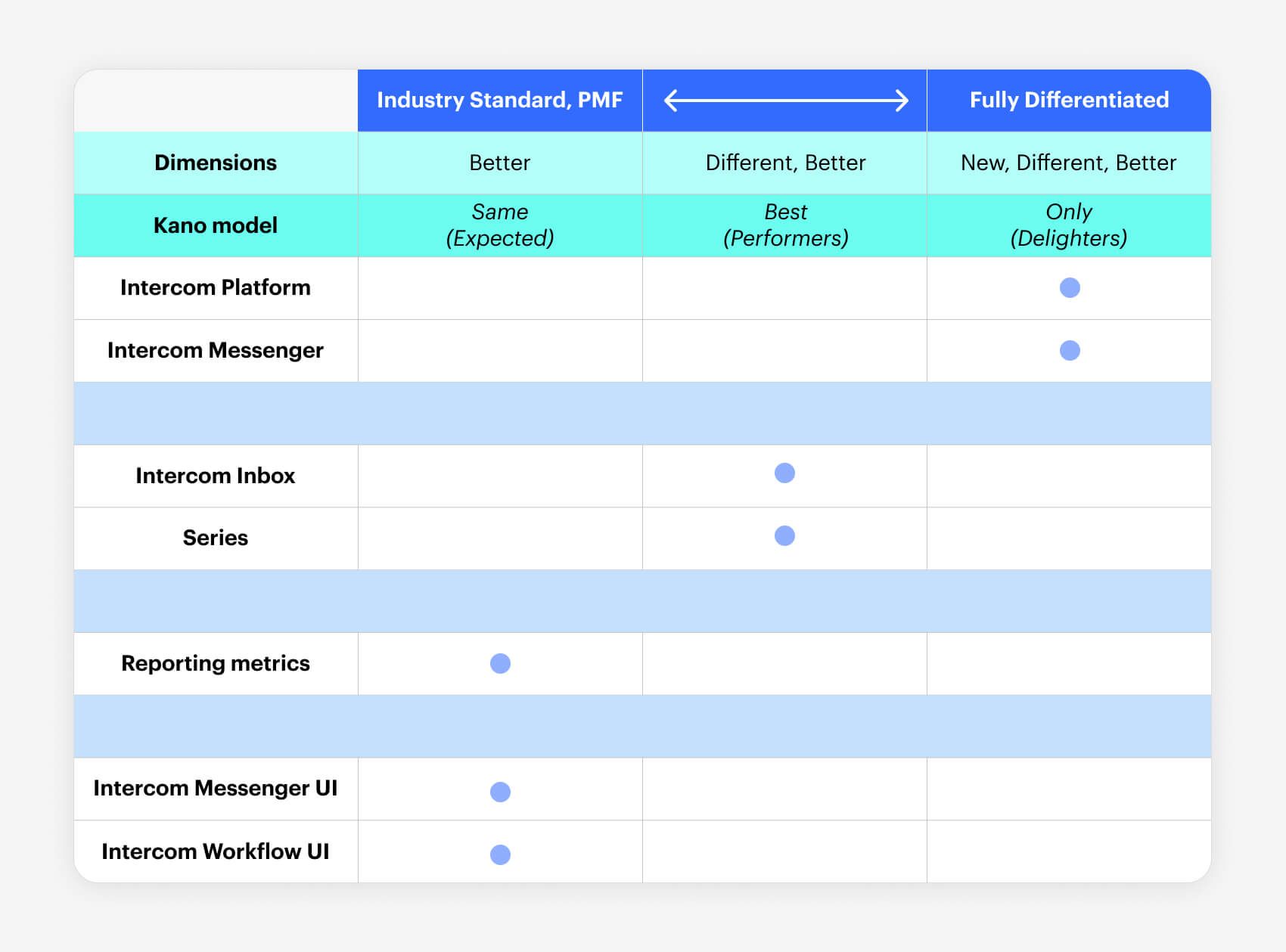
Thoughts on innovation
We recently had an internal discussion about innovation. What does it mean to us, how do we think about it?
Like any company, we want to create new and better products that solve important customer problems – but how do our values of moving fast and starting small foster a culture of innovation? Below is my answer for our team. Hopefully it is useful for you in thinking about this topic in your own company.
Innovation is a huge topic, but I want to provide an overview of how we think about innovation, and how we ensure our values, principles and processes foster innovation.
Innovation means doing new, different, and better
At its core, innovation means doing something that is new, different, and better. Something must objectively hit all three to be considered truly innovative. It must then be successfully brought to market, tested against what customers say, think and do, and have real market impact, to be unambiguously declared innovative.
“Our values of moving fast and starting small support the goal of being innovative”
Innovation doesn’t need to be big. Many of the great success stories in innovation are companies that constantly innovate in small ways. Some great product companies believe in making things 5-10% better each time through small innovative ideas. So in many cases, our values of moving fast and starting small support the goal of being innovative.
Doing things that are not innovative is good too
Sometimes deciding to design something in a different way isn’t the best choice.
So what isn’t innovation and how do we think about that? Doing something that isn’t new, isn’t different, isn’t better. This isn’t necessarily bad, and at times it is very good. Sometimes doing something that is exactly the same as it is now is great. It means customers already understand what the thing is, how to interact with it, and what to do with it.
“How do you design a steering wheel? A door? A light switch? You apply best practices and industry standards”
Sometimes there are solved problems and industry standards, and adhering to them is really important. In these areas, it is not a good idea to innovate. A lot of UI design falls into this category, as does a lot of executional design elsewhere in the world. How do you design a steering wheel? A door? A light switch? You apply best practices and industry standards. This is (almost always) not the place for something new.
Excellent execution can be a differentiator
Designing something to be better, but not necessarily different, can have huge impact and end up being a differentiator.
“Working on the non-innovative stuff can be more rewarding, fulfilling, meaningful”
Designing things that are industry standard make products easy to use. This doesn’t mean it’s easy. In fact it can be very hard to do this well – most software is not easy to use. This doesn’t mean you can’t hold a very high standard for execution, or that something can’t be delightful in use.
A huge lesson I learned throughout my career was that working on the non-innovative stuff can be more rewarding, fulfilling, meaningful. Working on making existing things better, but not necessarily different.
In fact, because we care deeply about the user experience of our product, simply designing better ways of doing existing things has in itself become a differentiator for us. Intercom is different, because it is better designed.
Understand different levels of innovation
You can innovate (generate new, different, better ways of doing things) at the business model level, at the product strategy level, at the product execution level. You can have an innovative go-to-market strategy. Bad companies try to innovate everywhere. Great companies know exactly when and where to innovate. They know who they are.
“Casper innovate at the business strategy level and their product is industry standard, best practice, nothing new. And they are very successful”
So different companies innovate at different zoom levels. On one extreme you have companies like Casper, who innovate at the business strategy level and whose product is industry standard, best practice, nothing new. And they are very successful. On the other extreme, you have a company like Snapchat, who innovate at the UI level, as that is part of what defines and differentiates them. Most companies, including us, are somewhere in between these two.
The core idea of Intercom – one product to see and talk to your customers, one platform to both engage and support your customers – was extremely innovative when we started. And that innovation has persisted. Which means that we don’t need to innovate in every area below the high level. That can be too much newness for customers to have to understand, and unnecessary to be very successful.
The importance of product-market fit
Before deciding to innovate, you must deeply understand your product-market fit, to know if innovation is the right thing to prioritize.
If you have an innovative product at the high level (as we do), this gives customers a reason to consider you as their solution. This gives you differentiation in the market. But it is not enough. For customers to move from consideration to purchase, and then usage and loyalty, you also need product-market fit. This means that your product works for your target market, that it is fit for purpose, that it does the things your customers need it to do.
“You must win permission from customers to innovate”
In most markets, no single product has 100% product-market fit. There are always product gaps. Closing these product gaps is critical for success. This is why our strategy docs always talk about two distinct things:
- Differentiation (i.e. innovation)
- Product gaps (i.e. product-market fit)
Our roadmaps must always balance differentiation and product gaps and this will oscillate over time. If your gaps are big, and there is already a reason to consider your product due to a clear differentiator, you must work on gaps. You must win permission from customers to innovate. If your product has significant gaps, and you have clear data that shows customers care a lot more about you closing those gaps versus coming up with new things, you must first close those gaps, improve your product-market fit, and win the permission to innovate.
Innovation and product-market fit are in a constant state of evolution
In a vibrant market, with many customers and many competitors, things that are new, different, and better get copied over time, and become no longer innovative. Today’s innovation is tomorrow’s industry-standard table-stakes feature. If you have it great, if you don’t it is a product gap. This is simply the march of technology. Our job is to stay ahead by balancing our investments in innovation (differentiation), and ensuring we have product-market fit.
“If we’re executing something industry standard, let’s ensure it is excellently executed, and better by being a wonderful user experience”
We must always be differentiated. There must always be a clear reason to choose Intercom because we are different and better. The day Intercom is not different and better is the beginning of the end. Which is why we must never let that day come!
You can plot where we believe we should innovate and it looks something like this table showing our key product areas and whether we think we need differentiation. Remember: we always strive to be better. If we’re executing something industry standard, let’s ensure it is excellently executed, and better by being a wonderful user experience.

Our strategies and our roadmap should always reflect clear and big investments in both innovation and closing product gaps to achieve product-market fit. The main thing is to identify where that balance lies in your product area – this will help explain to yourself and your team when you should be coming up with new ways of doing things versus excellent execution of the industry standard.
Ultimately, that’s how you ensure all your innovation will result in market impact.








